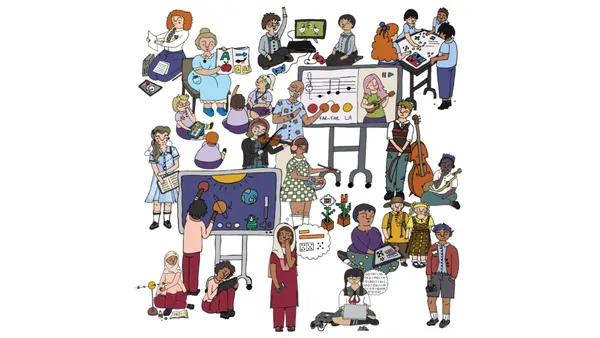Correction: A previous version of this story misidentified Georgia Omer.
Dive Brief:
- Georgia Omer, a teacher at the Alpine School District in Utah, describes in eSchool News how her school successfully converted from traditional letter grades to a standards-based grading model.
- To create buy-in and aid understanding, leaders of the 80,000-student district got teachers on board, hired a marketing firm that made a video designed for parents explaining the benefits and reasons for the switch, and followed up with continuing messages about standards-based grading through the parent portal.
- Technology also made the transition easier as the school district uses a student information system called Skyward to track student progress on specific standards, help create newly-designed report cards, and provide an accurate method of providing specific information about student progress to a child’s future teacher.
Dive Insight:
Standards-based grading is becoming increasingly popular in an educational culture that stresses personalized learning. Though the method has pros and cons, it does provide a way to assess and track student progress on individual elements and prepares a clearer picture of where students need to improve. Colleges are also getting on board with the method and are usually accepting of standards-based grading methods.
However, the use of standards-based grading does not necessarily equate with improved learning. In a recent study entitled “Getting High School Students Ready for College: A Quantitative Study of Standards-Based Grading Practices,” researchers compared ACT scores with standards-based assessments and noted that “the findings revealed [grade point averages] remain unchanged and ACT scores may be negatively impacted when high schools utilize standards-based grading practices.”
Many educators favor standards-based grading because it provides more useful information that can inform current and future teachers about student strengths and weaknesses. However, though the method shows real promise for both personalized and project-based learning environments, some parents are still reluctant to get on board, especially if they view it as diminishing the perception of student achievement, and thus, bragging rights. Clear communication is needed to overcome this barrier.
Stephanie Pinkin, a middle school ELA teacher in Efland, North Carolina, summed up her impressions of the challenges and benefits of implementing standards-based grading in an Education Week blog: "The benefits and progressive thinking behind SBG far outweigh the challenges of implementing the practice," she wrote. "We have gone long enough assigning subjective and arbitrary numbers to student performance, and it is time that our communication of student progress reflects student learning, and student learning only."












